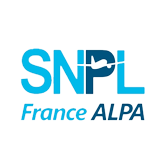
Press Release IFALPA on Yeti Airlines Flight YT-961
The International Federation of Air Line Pilots’ Associations (IFALPA) is closely monitoring the developments related to this morning’s accident of Yeti Airlines Flight YT-961, an ATR-72 (registration 9N-ANC) that impacted the ground on final approach to Pokhara airport (Nepal), following a flight from Kathmandu (...)
Press Release IFALPA on LATAM Airlines Flight 2213
IFALPA is closely monitoring the situation unfolding in Lima, Peru after Friday’s runway collision involving a departing LATAM Airlines A320 and a firetruck crossing the runway. Our condolences go out to the families and friends of the firefighters who lost their lives in this tragedy, and our thoughts are with the injured (...)
Safety Bulletin IFALPA: Re-entry of Rocket Long March 5B
Eurocontrol has warned of the unexpected re-entry into atmosphere of the large space object Rocket Long March 5B (CZ 5B), launched by China on 31 October 2022. Some of the projected trajectories could affect the southern European airspace. The European Organisation for the Safety of Air Navigation issued the Safety Information Bulletin to raise awareness and considered it a major risk (...)
ECA Summer Disruption Checklist
This Checklist has been compiled by ECA to draw attention to a number of safety-relevant issues that crews are likely to be faced with during a period where the European aviation system is expected to be strained to the maximum. It is not intended to supersede or replace individual company procedures and should be seen as an additional awareness tool to ensure safe, reliant, and efficient flight operations.
ECA Conference Statement: 2022 – A summer of disruptions
Years of cost-cutting, social dumping and COVID crisis management are now wreaking havoc in Europe’s aviation. A summer of disruptions, flight cancellations and aircrew fatigue has started and will likely worsen in the coming weeks. This ECA Conference – representing 40.000 European airline pilots – mandates the ECA Executive Board to urge the EU Commission and EASA, national oversight authorities, airline managements and all relevant stakeholders to ensure that (...)
Take part in the European survey
Take part in the European survey : Working conditions and flight safety
Briefing Leaflet IFALPA: Pilots’ Responsibilities when Accepting Air Traffic Control Clearances
This concept must always be in the forefront of pilots’ minds during all aspects of operations including when receiving an air traffic control clearance, instruction, or authorization (“clearance”). Pilots must determine whether they are able to safely execute all aspects of any clearance received prior to accepting and executing that clearance. Pilots are obligated to inform air traffic control (ATC) if they are unable to accept a clearance as given. Pilots are also obligated to obtain an amended clearance at any time they are no longer able to execute a clearance that was previously accepted (...)
Position Paper IFALPA: Disruption of Satellite-Based Signals
Modern air traffic relies heavily on the internal accuracy of aircraft systems and the aircraft's ability to monitor its own reliability. In recent years, satellite-based Communication, Navigation and Surveillance (CNS) services have been taking a growing part in the overall ATM system and aircraft are becoming more reliant on space-based signals (...)
Position Paper IFALPA: CAVS-CDTI Assisted Visual Separation
CAVS is an Airborne Surveillance Application (ASA) to assist pilots in maintaining own separation from a preceding aircraft during successive visual approach procedures by showing its position and additional data on a cockpit display. The data of the preceding aircraft is derived from ADS-B Out, received by the succeeding aircraft via ADS-B In and presented to the crew on a Cockpit Display of Traffic Information (CDTI) which can be integrated in the usual navigation displays (...)
Briefing Leaflet IFALPA: Follow the TCAS RA?
Following the EUROCONTROL report on TCAS RA compliance in 2020, both IFALPA and IFATCA issued a joint statement as a reminder to the pilot and controller community. The Eurocontrol study analysed radar data of TCAS RA events taken over a 12 month period over the core area of Europe. In a first Analysis, it reports only 38% of the RAs were followed correctly, and 34% were even manoeuvred in the opposite direction (...)
